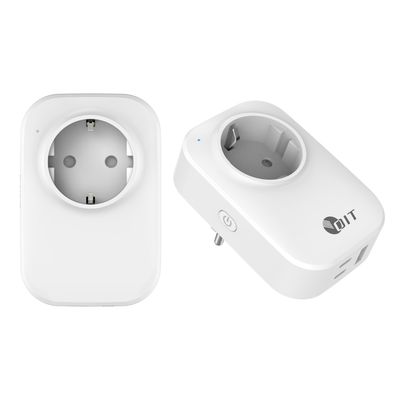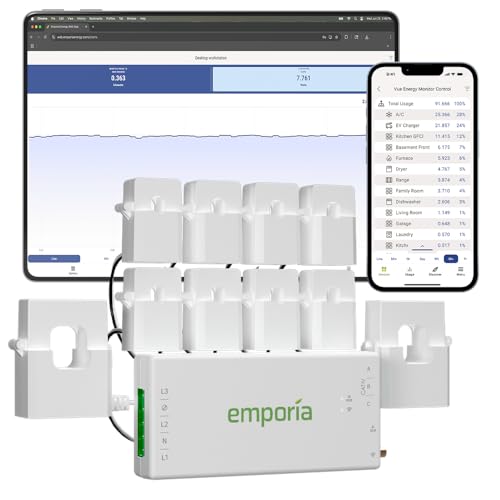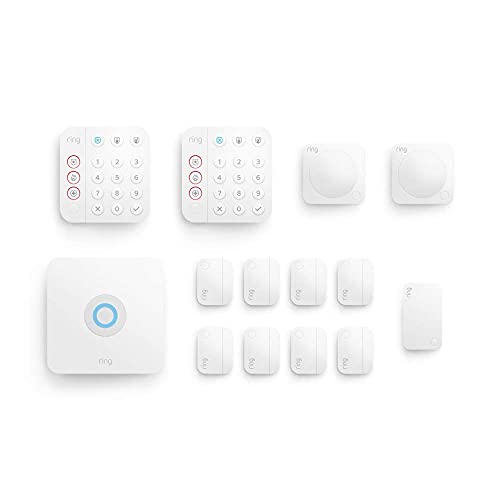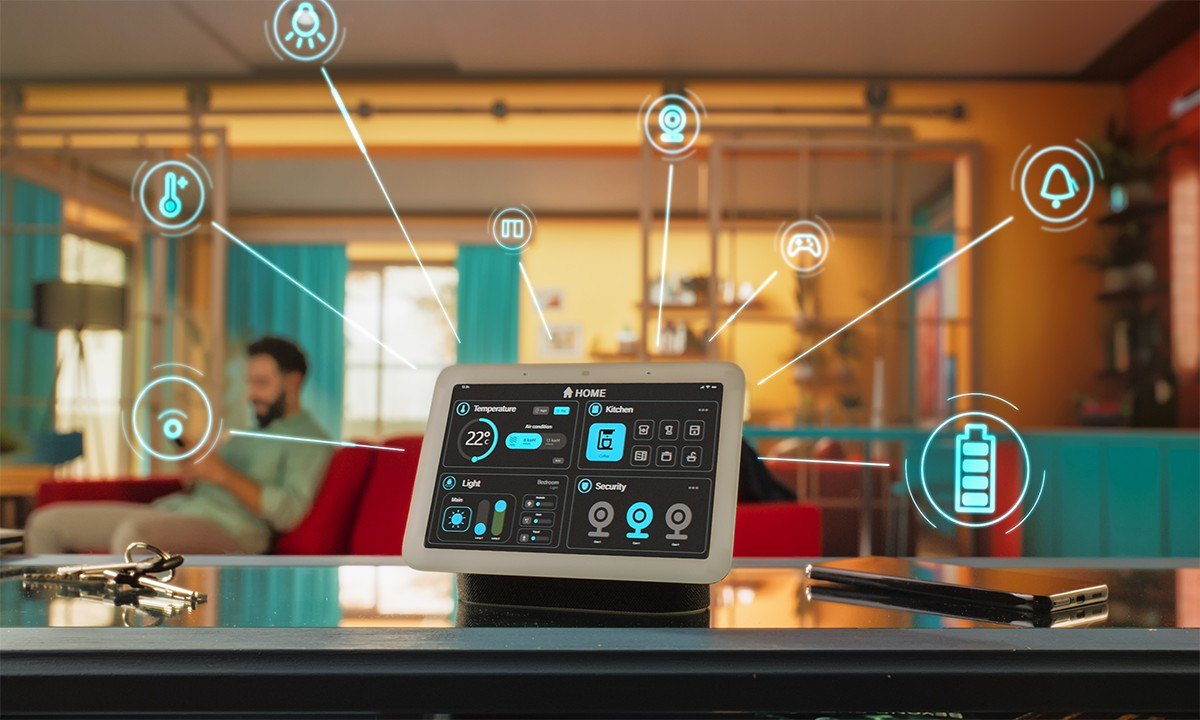Are you tired of high electricity bills and wasted energy? Imagine if your outlets could help you save power without any extra effort.
Making a smart energy-saving outlet is easier than you think, and it can cut down your energy use while protecting your devices. You’ll discover simple steps to create your own smart outlet that works for you. Ready to take control of your energy and keep more money in your pocket?
Keep reading to find out how.

Credit: www.accessnewswire.com
Benefits Of Smart Outlets
Smart outlets help control your home’s energy use. They make it easy to save power and money.
These outlets connect to your phone or voice assistant. You can turn devices on or off from anywhere.
Lower Energy Bills
Smart outlets stop devices from using power when not needed. This lowers your electricity bill each month.
You can set schedules or timers to control when devices run. This avoids wasting energy during off hours.
- Turn off lights and appliances remotely
- Set automatic schedules for devices
- Track energy use to find savings
Enhanced Home Safety
Smart outlets reduce risks by turning off devices that can overheat. They help prevent fires at home.
You can check if devices are on or off from your phone. This keeps your home safer when you are away.
- Detect unusual power use
- Turn off forgotten devices instantly
- Control outlets from anywhere
Remote Control Convenience
Smart outlets let you control your devices from your phone or tablet. You do not need to be near the outlet.
This makes it easy to manage your home’s devices anytime. You can turn things on before you arrive home.
- Control devices with mobile apps
- Use voice commands with assistants
- Manage multiple outlets in one place
Key Features To Include
Components Needed
Building a smart energy-saving outlet requires several key parts. Each part plays a role in saving energy effectively.
Choosing the right components helps the outlet work well and last longer.
Microcontroller Selection
The microcontroller is the brain of the smart outlet. It controls all actions and processes data.
Pick a microcontroller with enough pins and memory to handle sensors and communication.
- Popular choices include Arduino, ESP32, and Raspberry Pi Pico
- Look for low power use to save energy
- Make sure it supports your needed sensors and modules
Relay And Switching Mechanism
A relay acts as a switch to turn the outlet on or off. It controls the flow of electricity safely.
Choose a relay that can handle the voltage and current of the devices you will use.
- Electromechanical relays are common and reliable
- Solid-state relays work silently and last longer
- Consider using a transistor or MOSFET for low power switching
Sensors And Meters
Sensors measure energy use and environmental conditions. Meters track power consumption in real time.
These devices help the outlet decide when to save energy or turn off appliances.
- Current sensors like ACS712 measure electrical flow
- Voltage sensors monitor the power supply
- Temperature sensors help prevent overheating
- Power meters calculate total energy used
Communication Modules
Communication modules let the smart outlet connect to other devices or the internet.
This connection allows remote control and monitoring from a phone or computer.
- Wi-Fi modules like ESP8266 enable wireless internet access
- Bluetooth modules connect to nearby devices
- Zigbee or Z-Wave modules are good for smart home systems
Step-by-step Assembly
Building a smart energy-saving outlet helps reduce power waste. This guide shows simple steps to assemble it correctly.
Follow these instructions carefully to ensure your outlet works safely and efficiently.
Wiring The Outlet
Start by turning off the main power to avoid accidents. Connect the live, neutral, and ground wires to the correct terminals on the outlet.
Use a screwdriver to tighten all connections. Make sure no wires are loose or touching each other.
- Identify live (usually brown or black), neutral (blue), and ground (green/yellow) wires
- Attach live wire to the outlet’s live terminal
- Attach neutral wire to the neutral terminal
- Connect ground wire to the ground terminal
- Check all connections for tightness and safety
Programming The Controller
Use the controller’s software to set energy-saving rules. You can program when the outlet turns on or off.
Set timers or sensor triggers to control power flow based on your needs.
- Open the controller app or software
- Choose the schedule for power on and off times
- Set sensor thresholds if using motion or light sensors
- Save the settings to the controller
Setting Up Connectivity
Connect the outlet to your home Wi-Fi or smart hub. This allows remote control and monitoring.
Follow the device’s instructions to pair it with your network and apps.
- Turn on the outlet’s Wi-Fi or Bluetooth mode
- Use your phone or computer to find the device
- Enter your network password to connect
- Test the connection by turning the outlet on or off remotely
Tips For Maximizing Savings
Smart energy-saving outlets help lower electricity use in your home. Using them right can save you more money.
These tips will show you how to get the best results from your smart outlet.
Identifying High-usage Devices
Find which devices use the most energy in your home. These devices cost the most to run.
Look for appliances that stay on for long times or use a lot of power at once.
- Heating and cooling units
- Refrigerators and freezers
- Entertainment systems
- Chargers and computers
- Kitchen appliances like microwaves
Optimizing Schedules
Set your smart outlet to turn devices off when not needed. This avoids wasting power.
Use schedules to run appliances during off-peak hours if your utility offers lower rates.
- Turn off lights and devices at night or when away
- Run washing machines and dishwashers early morning or late night
- Use timers for heating or cooling systems
Utilizing Real-time Data
Check your outlet’s real-time energy use to see which devices use the most power. This helps you adjust habits.
Use the data to find ways to save, like turning off devices sooner or reducing use time.
- Monitor daily and weekly energy use trends
- Spot unusual spikes that may mean waste
- Adjust settings based on your energy goals
Troubleshooting Common Issues
Smart energy-saving outlets help reduce power use and save money. Sometimes, these devices face common problems.
Knowing how to fix these issues can keep your outlet working well and energy readings accurate.
Connectivity Problems
Smart outlets need a strong Wi-Fi signal to work correctly. If the connection drops, the outlet may not respond.
Check your router and move the outlet closer if the signal is weak. Restarting the device can also help.
- Ensure the Wi-Fi password is correct
- Keep the outlet near the router
- Restart your router and outlet
- Update the outlet’s firmware if possible
Inaccurate Energy Readings
Sometimes, the outlet may show wrong power usage data. This can happen if the device is not calibrated properly.
Try unplugging and plugging the device back in. Check if the device’s app or software needs updates.
- Reset the smart outlet to factory settings
- Update the app or device firmware
- Check if the outlet supports the appliance’s power range
- Avoid using extension cords that may cause errors
Device Compatibility
Not all appliances work well with smart outlets. Some devices need special power setups or may not connect properly.
Read the outlet’s manual to see which devices it supports. Avoid plugging in high-power machines without checking first.
- Check voltage and wattage limits of the outlet
- Use only supported device types
- Contact support if unsure about compatibility
Future Enhancements
Smart energy-saving outlets will keep getting better with new technology. These changes will help save more energy and make life easier.
The future will bring smarter features and better integration with other devices. This will allow users to control their energy use more effectively.
Ai-powered Energy Management
Artificial intelligence can learn how you use energy at home. It will adjust power to devices to save energy without losing comfort.
AI can detect patterns and suggest the best times to use appliances. It can also turn off devices when not needed.
- Learn daily energy use habits
- Automatically reduce power during low use
- Send alerts for unusual energy consumption
Integration With Smart Home Systems
Smart outlets will connect easily with other smart home devices. This creates a unified system for managing energy and home comfort.
Users can control outlets through voice commands or mobile apps. The outlet will work with lighting, heating, and security systems.
- Control outlets via smartphone or voice
- Sync with smart thermostats and lights
- Set schedules for energy savings
Renewable Energy Compatibility
Future outlets will support renewable energy sources like solar panels. They will manage energy flow to use clean power efficiently.
This will allow homes to reduce reliance on the grid. The outlet will balance power from renewables and stored energy.
- Connect with solar and wind energy systems
- Monitor renewable energy use in real time
- Store excess energy for later use

Credit: us.amazon.com

Credit: reverttechnologies.com
Frequently Asked Questions
What Is A Smart Energy-saving Outlet?
A smart energy-saving outlet is a device that controls power usage. It helps reduce electricity waste by turning off appliances when not in use. These outlets can be programmed or controlled remotely, improving energy efficiency and lowering utility bills.
How Do Smart Outlets Save Energy?
Smart outlets save energy by cutting power to devices automatically. They detect inactivity or follow schedules to prevent standby power loss. This reduces unnecessary electricity consumption, making your home more eco-friendly and cost-effective.
Can I Install A Smart Energy-saving Outlet Myself?
Yes, many smart outlets are designed for easy DIY installation. They usually plug into existing sockets or replace standard outlets. However, some models may require basic electrical knowledge or professional help for safe installation.
Are Smart Outlets Compatible With All Appliances?
Smart outlets work with most household appliances and electronics. However, high-power devices like HVAC systems may need specialized outlets. Always check product specifications to ensure compatibility with your devices before purchasing.
Conclusion
Smart energy-saving outlets offer a practical solution for reducing energy waste. They help cut down on electricity bills. These outlets are simple to use and install. They make your home more efficient. With these devices, you can control power usage.
This leads to a greener environment. They are a great investment for any household. Enjoy the benefits of saving energy and money. Make the switch to smart outlets today. Start small, save big. Your future self will thank you.
17 min read





